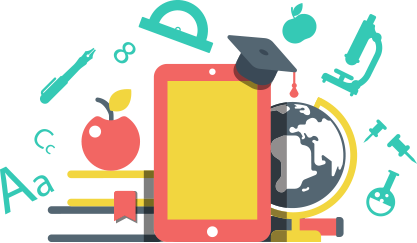
Education
Constructivists argued that learners must assemble their very own understanding of no matter is being taught. According to this attitude, the teacher’s task is not primarily one of selling knowledge transfer, neither is it certainly one of making certain that college students carry out persistently based on a predetermined description of data and abilities. The trainer’s role is to create an environment by which college students are in a position to arrive at their own interpretations of knowledge whereas becoming ever more skillful in directing their very own studying. Although the intellectual roots of behaviorism could be traced to the start of the twentieth century, behaviorism didn’t have much influence on schooling till the Sixties. F. Skinner’s ideas, educators selling behaviorism emphasized the importance of providing clear statements of what learners should have the ability to do following instruction. These educators also sought to interrupt complicated units of data and skills into smaller and simpler items, sequencing them in ways that would result in mastering the extra complex skills and content material. Frequently, their objective was also to individualize instruction as much as possible.
Your Students Deserve An Distinctive Training Expertise

In this manner, instructional know-how assists college students who want to investigate their own questions and considerations. Educational reformers consider education must be actual and authentic for college students. In the sciences, electronic probes permit science college students to collect exact weather or chemical response information and digitally trace developments and answer hypotheses. Graphing calculators, spreadsheets, and graphing software program provide arithmetic students with the flexibility to visualise tough mathematical ideas.
The next know-how to capture the curiosity of educators was the computer. Some of the earliest work on educational functions of computing took place in the Nineteen Fifties and the 1960s, but these efforts had little influence on colleges. It was not till the Eighties, and the appearance of microcomputers, that many educators and public officers became enthusiastic about computer systems. By January 1983, computer systems have been being used for instructional functions in 40 p.c of all elementary colleges and 75 % of all secondary schools in the United States. In most circumstances, college students had only limited access to computers, often in a pc laboratory and just for an hour or so every week.
In the social sciences, digital communication instruments (e.g. Internet conferencing, e-mail, digital dialogue groups) allow college students to communicate with their friends from many parts of the world. In the language arts, students use handheld computers and wireless networks to create joint writing exercises and read digital books that permit them to explore associated matters. Concept-mapping software program supplies all students with the opportunity to build the framework for a narrative or report and to map out linkages among complex characters, similar to those in a play by Shakespeare. In the humanities, students can explore photographs of authentic art work by way of the Internet; with applicable software they can create authentic digital paintings or musical compositions. Physical schooling college students can use digital probes to learn about the relationship between the impression of physical motion and physiological changes. During the last half of the twentieth century, cognitive theories of studying gained ascendancy over behaviorism amongst psychologists, and a number of the views of cognitive psychologists, represented by the term constructivism, began to affect schooling.
